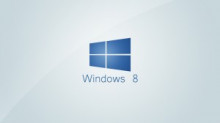There are two main reasons why you should definitely go for upgrading your PC to Windows 8. The first one being the simple fact that Windows 8 is going to usher in a new age of computing similar to the way in which Windows 95 did when it came into existence from the then previous Windows 3.0. The second point is the fact that Windows 8 pretty much runs smoothly on the exact same configuration that Windows 7 ran on. As a matter of fact Windows 8 will also run smoothly on any previous Windows Vista configuration too. The upgrade will in effect make your computing experience all the more smoother.
Then again, things can always take a detour to the bad. This is because performing a Windows 8 installation and using it are two different things. The former being something you need to be careful about whereas the latter makes your life of computing easier and is generally an easier task. So, before you start with the upgrade process you will need to make arrangements for backing up all important files such as videos, documents and photos etc. Also is the fact that upgrading to Windows 8 from either Windows 7 or Vista is completely different from an upgrade from Windows XP. This is because retaining your personal files and settings is possible while it is not possible in the latter. An upgrade from Windows XP will thus require you to suitably backup your files and folders.
Getting Started
- Create an image of your existing Windows installation, and then write it on to a DVD. Now this process will require several DVDs, so you need to be ready with a few of them and also the process takes around two hours to complete.
- Now, go to Microsoft’s website and scroll down to the option for Windows 8. You will need to initially install the customer preview, for which you will have to enter your email id, location and other relevant details. Read through and agree to the terms of download. Next, you will have to purchase the install code to proceed.
- After entering the install code, Windows will now proceed to checking your system’s specifications and then compare it with the minimum requirements for Windows 8 to work. This will point out the compatibility issues if any.
- Finally, you will have to enter the product key purchased from Microsoft. After the download is complete, Windows 8 will now be needed to be directed to its location of installation, where it will be installed successfully. You will also be given the choice of installing at another time too.
